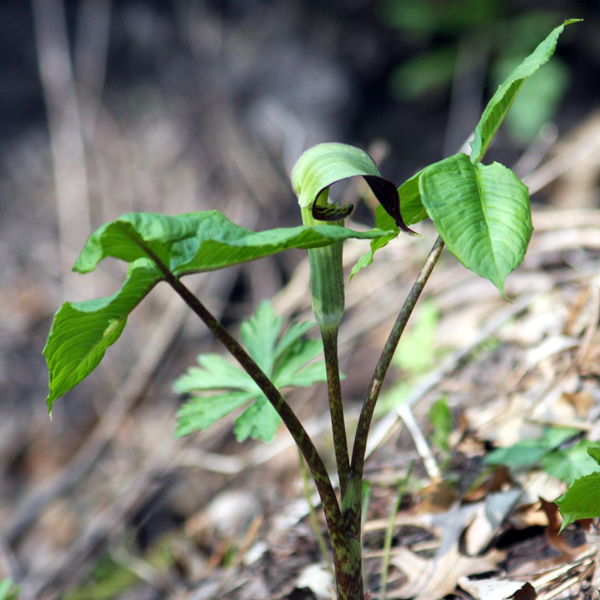
Wildflowers
Wildflowers are herbaceous flowering plants that tolerate cold winters. They often grow in the upper woodlands above bogs, pocosin or fens. They prefer partial to full shade, drier areas with woodsy soil that is moist, but well drained, and loose leaf cover. They frequently grow in large colonies along with trillium, may apples and blue bells.They are wonderful companions along the outside margins of carnivorous plant gardens.
Wildflowers can grown in acidic, slightly acidic, neutral or slightly alkaline soils, and benefit from the slow release of nutrients from decomposing humus. A good soil mix is 1:1:1 peat:sand:leaf mould. Peat provides the acidic, and moisture holding capacity. Sand provides good drainage with no nutrients. Leaf mould provide a slow and low release of nutrients. Leaf mould is shredded, partially decomposed oak or beech leaves. I prefer not to use perlite because it eventually floats to the surface and can look ugly and become a nuisance. I do not use vermiculite because it eventually decomposes into a slimey clay and compacts the soil.
The growing range for most Wildflowers is considerably wide. They naturally grow in Zones 3 to 9 in the eastern half of North America from Alberta and Newfoundland to Georgia and Alabama. This wide, natural range means they are very tolerate of winter conditions. I have found that most do well with winter temperatures of 45°F (7°C) when grown indoors, and outdoors in the ground can take temperatures below -22°F (-30°C). They do benefit from pine needle or weed free hay mulching, about 4-6" deep. This helps retain soil moisture and keeps winter temperatures from extreme fluctuation.




